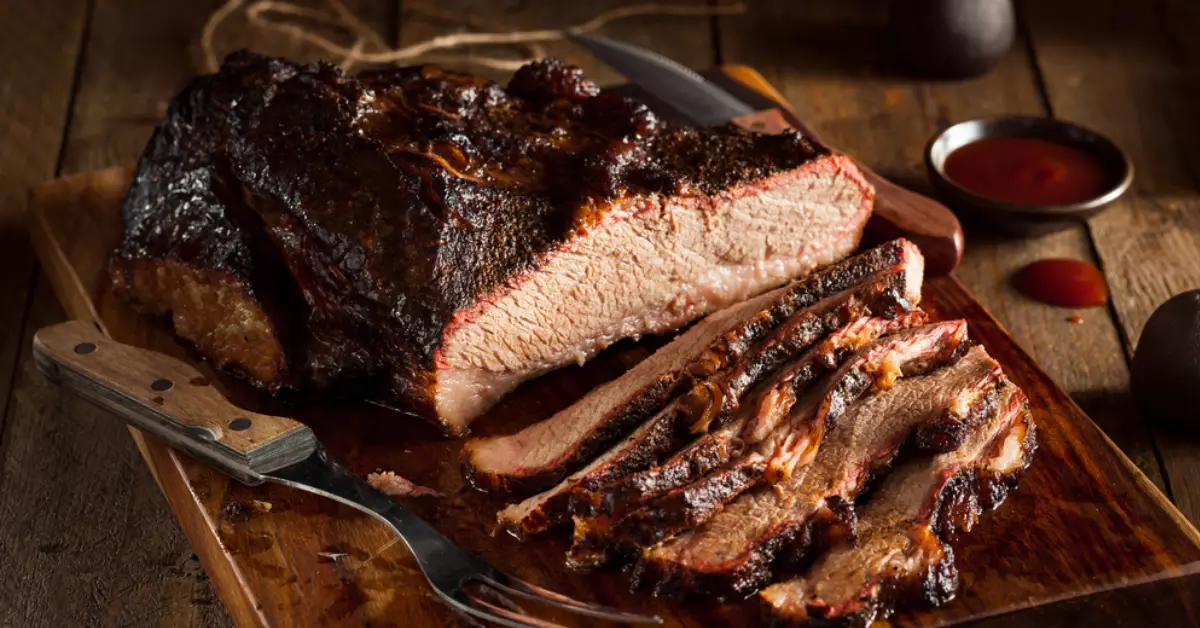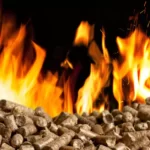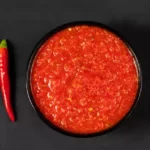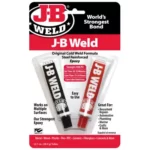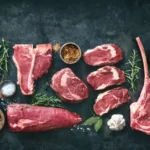If there’s one culinary delight that brings everyone together, it’s the savory, mouthwatering magic of a perfectly cooked brisket. However, a brisket’s deliciousness isn’t just about the cooking process; it’s also about maintaining its warmth before serving.
Keeping brisket warm is a delicate dance of heat and timing. Done right, you’ll have a dish that is tender, juicy, and bursting with flavor. Fail to keep it warm, and you risk losing the melt-in-your-mouth goodness that makes brisket so delightful.
The pursuit of perfect brisket warmth isn’t merely an exercise in patience. It’s an essential technique that can elevate your brisket from simply good to extraordinary.
Significance of Keeping Brisket Warm
Why Does Brisket Need to Stay Warm?
Brisket, known for its tough fibers, needs to be cooked slowly at a low temperature to become tender. But this transformation doesn’t stop once you take it off the heat. The brisket continues to cook, or ‘rest’, absorbing juices for a succulent, flavorful result. This rest period requires the brisket to stay warm, optimizing texture and taste.
Impact on Texture and Flavor
Warmth helps maintain brisket’s soft texture, as the heat keeps the muscle fibers relaxed. Cold fibers can stiffen, leading to a dry and chewy brisket. Similarly, warmth enhances flavor by allowing the meat to retain its juices, offering a rich, robust taste in every bite.
Perfect Brisket Temperature
Ideal Internal Temperature
For optimal tenderness and flavor, brisket should rest at an internal temperature between 150-170°F (65-75°C). This temperature range allows for the perfect equilibrium of heat and moisture, ensuring the brisket remains juicy, tender, and flavorful.
Using a Meat Thermometer
A reliable meat thermometer is an indispensable tool for achieving the perfect brisket temperature. By measuring the brisket’s internal temperature, you can ensure it stays within the ideal range during the resting process.
Methods to Keep a Brisket Warm
Utilizing an Oven: Step by Step Guide
- Preheat the oven to a low temperature, around 170°F (75°C).
- Place the brisket (wrapped in foil) in a roasting pan.
- Put the pan in the oven, making sure the meat thermometer is inserted into the brisket.
- Monitor the temperature and adjust the oven setting if needed.
Using a Cooler: The How and Why
An insulated cooler can act as a makeshift warmer, keeping your brisket hot for hours. Simply place the foil-wrapped brisket inside, and close the lid. The cooler’s insulation maintains the heat, allowing the brisket to rest without losing its warmth.
Warming Cabinets: Their Benefits
Professional caterers often use warming cabinets to keep their brisket warm. These appliances offer precise temperature control, ensuring the brisket stays at the perfect heat level. While more expensive than other methods, they’re a great investment for brisket aficionados.
Pitfalls to Avoid When Warming Brisket
Successfully maintaining brisket warmth isn’t without its potential pitfalls. Certain missteps can significantly impact the end result, leaving you with a brisket that is far from its full potential.
Overheating Risks
Overheating is a common issue when trying to keep your brisket warm. Excessive heat can lead to the breakdown of the fat and collagen within the brisket more than necessary, leading to a loss of moisture and a disappointing rubbery texture. To avoid this:
- Always use a meat thermometer to accurately measure the temperature.
- Ensure your heat source is set to a low temperature, ideally between 150-170°F.
- Regularly monitor the brisket during the resting process.
Premature Cutting
Cutting into your brisket too soon can lead to significant loss of juices. This not only reduces the brisket’s flavor but also its overall tenderness. Here are some key points to remember:
- Allow your brisket to rest for a good amount of time before carving into it.
- Always use a sharp knife to minimize juice loss.
- Cut against the grain for maximum tenderness.
Drying Out: Causes and Preventions
Brisket drying out is another potential pitfall, especially when warming for extended periods. Here are some ways to prevent it:
- Ensure your brisket is tightly wrapped in foil or butcher paper to trap the juices.
- Regularly check the brisket’s internal temperature. If it drops too low, the brisket may begin to dry out.
- Use a drip tray when warming in an oven to catch any escaping juices.
Reheating a Brisket: Best Practices
While keeping a brisket warm is ideal, sometimes reheating is necessary. However, care must be taken to ensure that the brisket retains its flavor and tenderness during the reheating process.
Oven Reheating: A Detailed Methodology
Reheating brisket in an oven is often the preferred method due to the even heat distribution. Here are the steps:
- Preheat the oven to a moderate temperature, typically around 325°F.
- Place the brisket in a baking dish and add some broth or reserved juices to the dish to prevent it from drying out.
- Cover the dish with aluminum foil to trap the heat and moisture.
- Reheat the brisket until the internal temperature reaches 165°F, which typically takes about 20-30 minutes. Remember to regularly check the brisket to avoid overheating.
Reheating with a Microwave: Do’s and Don’ts
While convenient, reheating brisket in a microwave can easily result in overcooked, dry meat if not done carefully. Here are some tips:
- Always reheat at medium power to prevent the brisket from drying out or overheating.
- Consider slicing the brisket before microwaving to ensure even heat distribution.
- Check the brisket frequently to avoid overheating.
- Consider adding a bit of broth or juices to the dish before microwaving to keep the brisket moist.
Sous Vide Reheating: A Unique Approach
Sous vide is a method that involves sealing the brisket in a bag and immersing it in a water bath at a controlled temperature. It’s a fantastic method for preserving the brisket’s inherent moisture and flavor.
- Use a vacuum sealer or a zipper seal bag for the brisket.
- Set the sous vide machine to 165°F and let it preheat.
- Place the bag in the water bath and let it reheat for about 1-2 hours.
- Ensure the brisket is heated evenly by moving the bag around occasionally.
Essential Tools for Brisket Temperature Management
Keeping a brisket warm requires a few essential tools. These tools help maintain the correct temperature, keeping the brisket moist and flavorful.
Meat Thermometers: Your Best Friend
A meat thermometer is crucial for maintaining the correct brisket temperature. It allows you to accurately measure the internal temperature, ensuring that the brisket stays within the optimal range.
- Invest in a good quality thermometer that provides quick and accurate readings.
- Insert the thermometer into the thickest part of the brisket for accurate measurements.
- Remember that thermometers can lose calibration over time, so check for accuracy regularly.
Quality Coolers: A Worthwhile Investment
A good-quality, well-insulated cooler can keep your brisket warm for several hours. Here are some tips for using a cooler to keep your brisket warm:
- Choose a cooler with high insulation ratings for the best results.
- Preheat the cooler by filling it with warm water. This increases the time the cooler can maintain the brisket’s temperature.
- Always wrap the brisket in aluminum foil or butcher paper before placing it in the cooler to maintain moisture and flavor.
The Role of Aluminum Foil in Keeping Brisket Warm
Benefits of Foil Wrapping
Foil helps maintain the brisket’s temperature, keeps it moist, and allows for even heat distribution. It’s also versatile, as it can be used in ovens, coolers, and warming cabinets.
How to Wrap Brisket Properly
- Double layer the foil for extra insulation.
- Wrap the brisket tightly, folding the edges to create a seal.
- Avoid piercing the foil to preserve the meat’s juices.
How to Serve and Enjoy Warm Brisket
Cutting Techniques for Warm Brisket
For the most tender slices, always cut brisket across the grain. Use a sharp knife and make sure to carve in a consistent thickness for each slice.
Perfect Pairings: Sides and Drinks
Brisket pairs well with hearty sides like mashed potatoes or coleslaw, and for drinks, try a full-bodied red wine or a smoky bourbon.
Frequently Asked Questions
How long can I keep brisket warm in a cooler?
A high-quality, well-insulated cooler can keep a brisket warm for up to 5-8 hours, if properly wrapped in foil.
What if my brisket gets too cool during the resting period?
If your brisket cools below the ideal temperature, you can reheat it using the oven method mentioned earlier. Be careful to monitor the temperature to avoid overheating.
Does wrapping in foil affect the brisket’s flavor?
No, wrapping in foil does not impact flavor. However, it helps retain the brisket’s natural juices, thereby enhancing its taste.
Conclusion
Keeping brisket warm is a blend of science and art. With the right tools, methods, and a bit of patience, it’s entirely possible to retain that mouthwatering tenderness and rich, savory flavor that we all love in a well-cooked brisket.
There’s a certain satisfaction in mastering the art of maintaining brisket warmth. With these techniques in hand, you’re not just preserving heat – you’re enhancing flavor, texture, and the overall eating experience.

